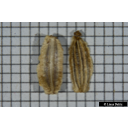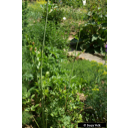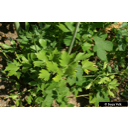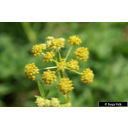Useful information about the taxon (species, subspecies, variety...)
Levisticum officinale W. D. J. Koch 1824
Apiaceae (Umbelliferae)
(APG IV)Akzessionnummer: HvB-15090
Pflanzjahr: 0
Taxon concept: The Plant List (2010)
Levisticum officinale W. D. J. Koch - Accepted: Levisticum officinale W. D. J. Koch bei Zander 2008; Familie: Apiaceae (Umbelliferae) (Zander 2008)Levisticum officinale W. D. J. Koch - Accepted: Levisticum officinale W. D. J. Koch bei The Plant List (2010); Familie: Apiaceae (Umbelliferae) (APG III)Levisticum officinale W. D. J. Koch - Accepted: Levisticum officinale W. D. J. Koch bei The Plant List (2010); Familie: Apiaceae (Umbelliferae) (APG III)Levisticum officinale W. D. J. Koch - Accepted: Levisticum officinale W. D. J. Koch bei The Plant List (2014), version 1.1; Familie: Apiaceae (Umbelliferae) (APG III)Levisticum officinale W. D. J. Koch - Accepted: Levisticum officinale W. D. J. Koch bei The Plant List (2014), version 1.1; Familie: Apiaceae (Umbelliferae) (APG IV)Levisticum officinale W. D. J. Koch - Accepted: Levisticum officinale W. D. J. Koch bei World Flora Online - APG IV (Angiosperms); Familie: Apiaceae (Umbelliferae) (World Flora Online - APG IV (Angiosperms))
- Life form
- herbaceous, terrestrial, perennial
Dingermann, T. & Zündorf, I. (2013): Beschreibungen des Neuen Senckenbergischen Arzneipflanzengartens. Online: http://www.pharmazie.uni-frankfurt.de/ Neuer_Senckenbergischer_ Arzneipflanzengarten/index.html.; Düll R. et al. (2022): Die Wild- und Nutzpflanzen Deutschlands.. Quelle & Meyer Verlag, Wiebelsheim, 9. Auflage: 950.; Erhardt, W., Götz, E., Bödeker, N. & Seybold, S. (2008): Der große Zander. Enzyklopädie der Pflanzennamen. Band 2. Arten und Sorten. Eugen Ulmer KG, Stuttgart (Hohenheim), 18. Aufl., 2103 S.; Frenzel, B. (2006): Heilpflanzen der Äbtissin Hildegrad von Bingen (1098 - 1179 n. Chr. im Botanischen Garten der Universität Hohenheim - ein Beispiel für den langen Gang medizinischer Erfahrungen und Hoffnungen. Hildegard von Bingen - und der Hohenheimer Heilpflanzengarten (Hrsg. Fellmeth, U.); Jäger, E. (Hrsg.) (2011): Rothmaler - Exkursionsflora von Deutschland. Gefäßpflanzen: Grundband. Band 2. Springer Spektrum Verlag, 20., neu bearb. u. wesentl. erw. Aufl.: 944 S. 978-3-8274-1606-3.; Jäger, E. J. et al. (2007): Rothmaler - Exkursionsflora von Deutschland. Band 5: Krautige Zier- und Nutzpflanzen. Spektrum Akademischer Verlag, Aufl. 31.10.2007: 880.; Ministerium für Ernährung, Landwirtschaft, Umwelt und Forsten, Baden-Württemberg (Hrsg.) (1985): Pflanzenkatalog zur Verbesserung der Bienenweide und des Artenreichtums (Kurztitel: Bienenweidekatalog); Oberdorfer, E. (2001): Pflanzensoziologische Exkursionsflora. Für Deutschland und angrenzende Gebiete. Eugen Ulmer Verlag, Stuttgart, 8., stark überarb. u. erg. Aufl, 1056 S. 978-3-8001-3131-0.; Parolly, G. et al. (2019): Schmeil-Fitschen: Die Flora Deutschlands und angrenzender Länder.. Quelle & Meyer Verlag, Wiebelsheim, 97. Aufl.; Pritsch, Günter et al. (2007): 200 Trachtpflanzen erkennen und bewerten.. Kosmos, Stuttgart; Schick, B. & Spürgin, A. (1997): Die Bienenweide. Eugen Ulmer Verlag, Stuttgart, Auflage: 4., völlig neubearb. u. erw. A., 216 S. 978-3800174188.; Schönfelder, P. (2011): Das neue Handbuch der Heilpflanzen.. Franckh-Kosmos Verlags-GmbH & Co. KG, Stuttgart: 502. 978-3-440-12932-6.; The International Plant Names Index (2009). Published on the Internet http://www.ipni.org; Courtesy to IPNI, 2009. Exported from IPNI at date: 2009-09-22 20:17:51;
Diese Webseite verwendet Google Maps, um Karten und Standorte von Pflanzen in den Hohenheimer Gärten anzuzeigen. Dadurch werden unter Umständen Daten an Google weitergeleitet, was mit einer Verarbeitung Ihrer personenbezogenen Daten verbunden sein kann. Die Datenschutzerklärung von Google finden Sie hier: Datenschutzerklärung von Google





